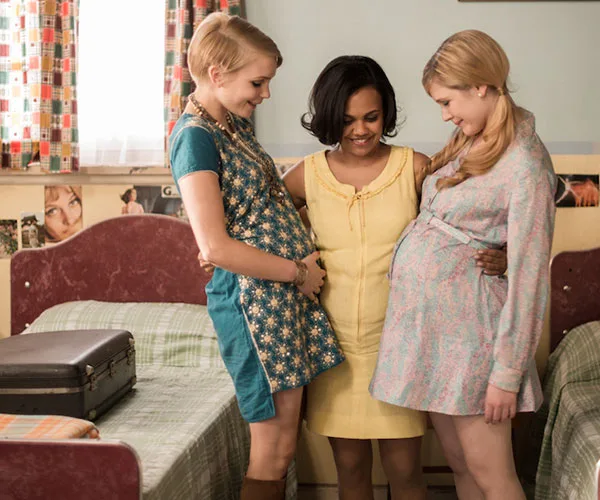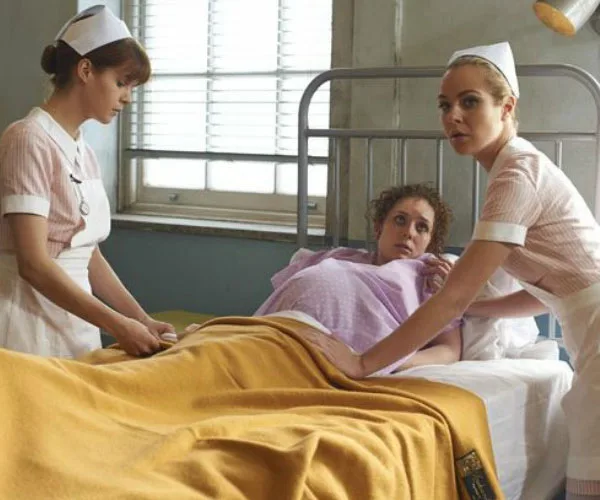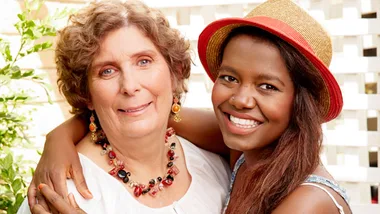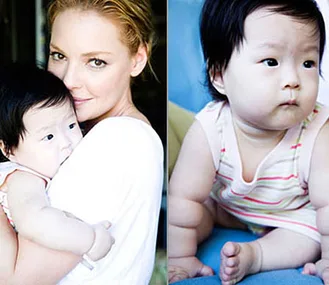The practice of forced adoptions plagued Australia throughout the 50s, 60s and 70s. Tens of thousands of mothers, fathers, adopted children and families were torn apart by coercion and physical force, with many unwed mothers placed in homes before having their babies taken away.
Love Child tackles the extremely controversial topic and although many of us enjoy it as a work of fiction, for Tessa*, it was her reality.
Living in a small country town in 1977, 16-year-old Tessa found out she was pregnant to her boyfriend of a couple of months. She struggled with the disbelief and denial that came with the realisation, opting to stick her head in the sand.
WATCH: Jay Thomas talks about why he gave his son up for adoption.
“I ignored it for a while until it got to the point that I couldn’t ignore it anymore,” she said.
“When I told my mother, she already had an instinct that I probably was.”
Tessa knew plenty of girls who had fallen pregnant and they just disappeared – nobody ever discussed it and they certainly never came back.
Tessa’s mum and aunty, however, felt they could handle the pregnancy between them and didn’t feel it necessary to send her away to a home for young, single women like the one the girls on Love Child are confined to.
WATCH: The heartwrenching moment two boys are reunited with their adoptive family.
“I wasn’t hidden away but I also wasn’t out living a normal life,” she explained.
“My aunty would come and take me for a walk in the morning and then I would stay at home. If we had any visitors, they kind of hid me away.
“I guess that was their way of protecting me and how they prevented having to explain what was going on,” she added. “With the societal pressures at the time, I think they were trying to protect me, but were keenly aware of judgement on themselves.”
The topic of adoption was never a question – it was just what was done. One GP insisted Tessa bond with the baby after she gave birth, nursing it and establishing a relationship before it was taken away, but her mother was horrified by that idea and promptly found a GP who felt the same way.
“I think 16 in those days was a lot younger than 16 these days, you just kind of went with whatever you were told,” she said.
“You’re not worldly; you don’t know what’s going on. There was no internet you couldn’t find other people’s experiences and nobody talked about it.”
When it was finally time to have the baby, it was a traumatic, cold affair. As soon as he was born, he was quickly swaddled and taken away before she could see him.
A welfare officer walked her through the steps of the adoption process and it was then that she found out that recently, adoption laws had changed.
“He said you can sign the papers but it isn’t binding. You had, I think, 30 days and you could change your mind.” With that knowledge, she signed the papers and went home – but it didn’t last long.
“I imagined that every day of my life I’d be looking for this child in the street and thinking ‘is this my child?'”
“I knew I couldn’t go through with it.”
Tessa and her family went back to the hospital five days later and she took Jack* home – it was the first time she’d laid eyes on him.
Tessa considers herself in some ways fortunate: Fortunate that she had her baby after laws had changed and she was able to change her mind; Fortunate that her mum was quite young and willing to act as the primary carer while Tessa went back to school and study; And fortunate that no-one ever tried to sway her one way or another, leaving the immense decision squarely on her shoulders.
When Julia Gillard apologised to the women and children who [experienced forced adoptions] throughout the late 1950s to the 1970s, Tessa said the acknowledgement meant a great deal.
“Mine wasn’t as extreme as theirs, but it was certainly good to have your traumas validated,” she reveals..
“Love Child brings back lots of memories every time I watch it, and I know people that went to places like that and I think Love Child sometimes sugar-coats the reality of it – some women’s experiences were much worse than that,” she adds.

Despite the traumatic start to their life together, Jack and Tessa now have a beautiful, resilient relationship.
“My son and I have a really strong relationship. He’s 40 now and when he was six or seven, I met my husband who I’m still married to today,” she explained.
“Jack hadn’t really had a relationship with his biological father until recently, so it was my husband that raised him. Now they’re very close and my husband loves Jack as he much as the two children we had together.”
Now, Tessa has a gorgeous family, heads her own business and works for a charity in the health department, but she’s aware of how just how fortunate she is.
“My story worked out, I was lucky.”
*All names have been changed to protect the identity of those involved.
Love Child Season 4 is out now on DVD.



